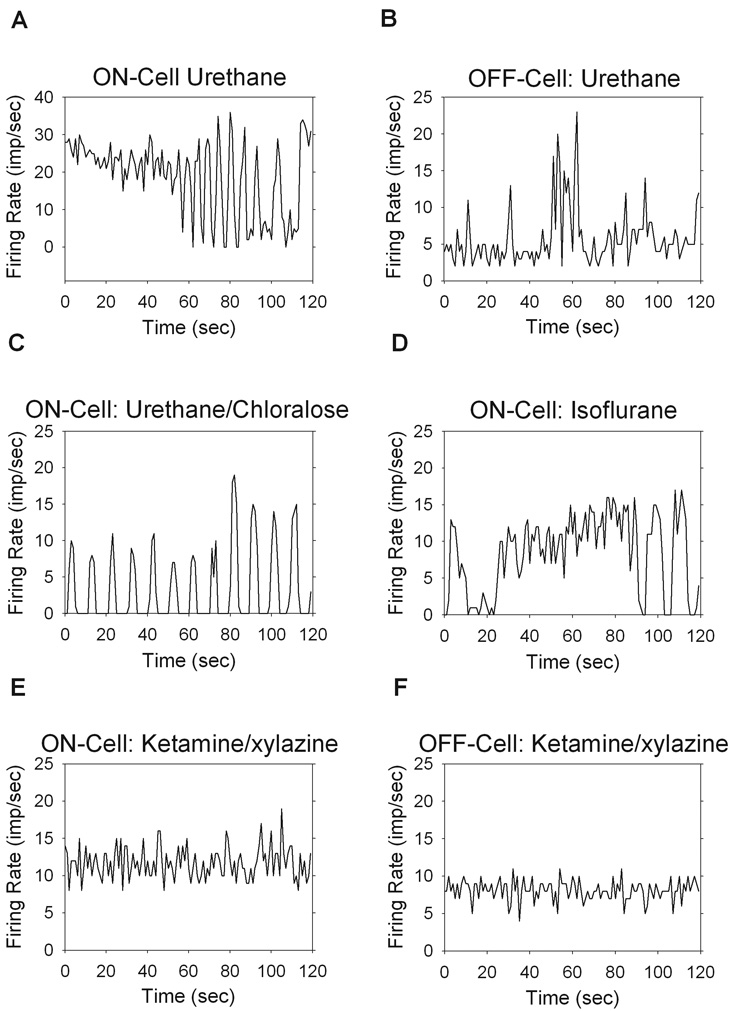Figure 1.

Effects of anesthesia on the maintained discharge, showing the firing rate over a 2min period (bin size = 1sec). The average run score, <R>, is given and was computed across 8, 16, 32, and 64 interval sets for each record. Examples under urethane anesthesia for an ON-cell (<R>=−1.12) (A) with periodic fluctuations in rate and an OFF-cell (<R>=−6.99) (B) showing random fluctuations in rate. Urethane/chloralose (<R>=−4.10) (C), and isoflurane (<R>=1.79) (D) anesthesia showed quasi-periodic fluctuations in rate, similar to that seen under urethane alone. Ketamine/xylazine anesthesia gave stationary discharges, with examples from a typical ON-cell (<R>=0.06) (E) and OFF-cell (<R>=0.12) (F).
